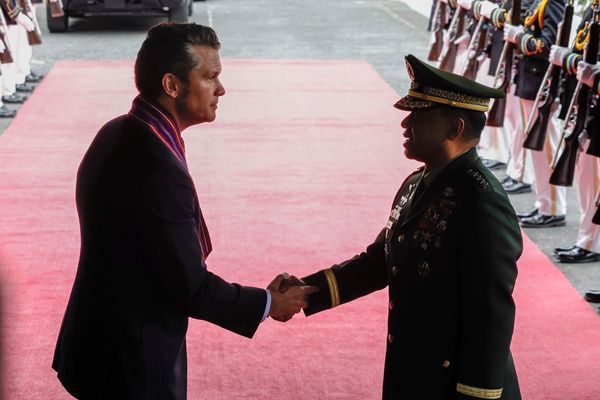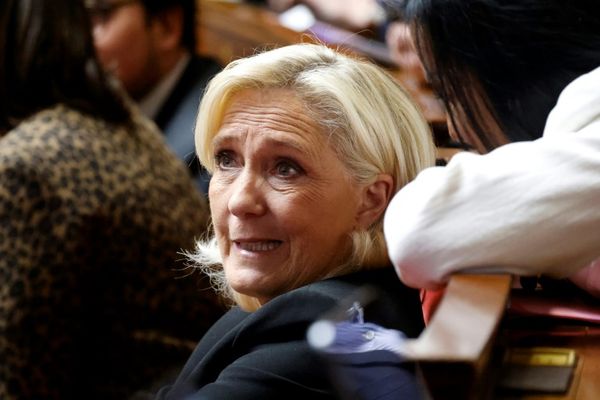On May 6, 2004, 52.5 million people watched a group of young friends, or “Friends,” wrap up their professional and romantic adventures.
“Friends” was a huge hit for NBC, and it lives on as new generations of fans hit its target demographic, but at the time, the finale was seen as a harbinger of the cable-induced drop in the audience for network television. The “M*A*S*H” finale in 1983 scored CBS 106 million viewers, “Cheers” on NBC in 1993 attracted a whopping 80.4 million and “Seinfeld’s” swan song on NBC in 1998 was watched by more than 76 million. None of these shows cost ungodly sums to produce, and all spawned massive profits for their networks. So did the last episode of the first season of “Survivor”: 51.7 million viewers.
That was then. On a Sunday night in May, “Succession,” an HBO show with huge buzz and massive media interest, scored 2.9 million viewers for its season finale, a huge number for 2023 and yet only about 5% of the people who watched “Survivor” in 2000. And most Netflix shows garner a fraction of that viewership.
What happened? Phones, Netflix, Amazon, Apple, TikTok, YouTube.
As they have with so many other aspects of American life, including journalism, Big Tech companies reordered and took increasing control of how we consume entertainment. User-generated content sucked up ads. And rich companies like Amazon, for whom entertainment production is just one of many businesses, could combine experimentation with colossal disruption.
This is the backdrop for the bitter strike, first by the Writers Guild of America and, on Friday, with the addition of the actors in the Screen Actors Guild-American Federation of TV and Radio Artists. The work stoppage has ground movie and TV production to a halt in Chicago, New York, Los Angeles and elsewhere.
If you were a writer on one of those old shows, you had a very nice life. There was a hefty paycheck, which the networks were happy to pay since they sold advertising off those huge viewerships; the creative camaraderie of a crew writing 22 consecutive episodes together; and continued payments as the shows were syndicated. Your year was made without working a full year, and the rest was gravy, sometimes for the rest of your working life. And by the end, the “Friends” actors were making $1 million an episode.
Now, the situation has changed: Writers rooms have shrunk, producers have started creating so-called mini-rooms, where writers feel like freelanced commodities, and flat payments, rather than so-called residuals from further broadcasts, are the favored form of compensation. Viewership numbers have become trade secrets in many cases.
The studios and producers point out that there are far many more shows now on which to work, but with lower top-line potential and the changes are systemic and out of their control. The striking writers and actors argue that the producers like Netflix are quietly making huge profits by paying creatives less while richly compensating their CEOs.
Then there’s the thorny matter of artificial intelligence, a huge issue for actors who make a living off their faces and bodies. If you can do a scan and then later digitally manipulate a human form to do anything you want, then why pay that actor again?
It’s unlikely someone is going to do that to Tom Hanks anytime soon, but it’s a real possibility for extras in crowd scenes, and it has actors scared to death. Indeed, both groups see this as an existential fight for their professions, just as the studios on the other side of the table see an industry in a chaotic free-fall. Produce more? Come up with less? No one really knows, although it’s clear that the old-line studios are in a trickier spot than the tech giants, which can use entertainment production to leverage other profitable lines of business.
“Why should I care?” you might be asking. And, indeed, it’s true that Hollywood stars and writers make far more money than, say taxi drivers who were disrupted by ride-shares, which is why you don’t hear a lot from the WGA about hourly rates. They know that won’t gain much sympathy. But both of these professions have huge internal income disparity and many talented people who never see big money.
So what’s the solution that will bring back your favorite shows? On the matter of AI, we’re firmly on the side of the humans: The pernicious potential of AI, both with word and image, needs controls, and it needs them fast. Politicians need to be considering this, too, especially given the speed with which the field is moving. People have a right to their own face and what it is seen to do. And just because AI could write this editorial, kind of, that does not mean it should be allowed to do so. Humans have to stand with humans.
On the other hand, those huge viewership figures are not coming back, nor are the cushy days of writing for “Friends.” Featherbedding by insisting on writer minimums or artificially inflating employment duration from what is needed will not produce stability for either side.
The strikers and studios are, as is usually the case with these kinds of disputes, going to have to compromise. One way forward, along with decent raises, is for better cost and revenue disclosure on the part of the employers and more participation in profits for the writers and performers, where such profits exist.
If the producing entities can let their creative collaborators have more skin in a game they keep saying has changed beyond all recognition, there’s a better chance the market can play its time-honored role and everyone can get on the same team.
That already happened with directors, many of whom also are producers. That’s why their union did not go on strike.







